Packaging is at the intersection of numerous design choices that you must make. These decisions will impact the physical manifestation of your brand and will affect the total cost of goods. We contacted the experts at O-I to walk us through all of the various glass bottle options you have and why you might make certain decisions. If you missed part I on size and shape, you’ll want to double back and check it out.
Now we move on to consider how bottle shape and capacity work together with color and closure to ensure that your beer has the strongest shelf presence.
Hue and ambience
Color communicates product and brand positioning, while playing a role in the protection of your brew. The color of a glass bottle is literally molded into the container, giving it a depth as a natural characteristic of the material as a substrate. Color can be heightened by shape, embossing and the varying thickness of the glass. Most importantly, glass bottles pair color with translucence, which helps to showcase and enhance the natural visual properties of beer. There are three basic colors of glass available to you.
Amber
The oldest and most widely used color for beer bottles is amber. Most stock bottles are available in this color. Amber is perhaps the most identifiable color for beer bottles. It announces to the consumer that the bottle is filled with (or should be filled with) beer.
Amber glass provides excellent protection from ultraviolet radiation, blocking all wavelengths shorter than 450 nm. This protection safeguards the quality of your brand by ensuring the taste of your brew remains untouched, undisturbed and unaltered.
While amber is the most distinctive and historical beer bottle color, standing out on the shelf is becoming more vital in the sea of craft beers. Those seeking a more visually disruptive color should consider using flint or green glass bottles.
Flint
Flint is another commonly used color for beer bottles. The transparency of this color showcases the actual color of your beer. It highlights the visual aesthetic of your brew in all its glory. Due to its lucidity, beers bottled in flint glass should not require strict ultraviolet light protection. UV stable ciders and flavored malt beverages are often bottled in flint glass.

Green
To become even more visually disruptive, consider using green glass. Although not as popular or widely available as amber or flint glass bottles, green glass offers more brand equity. It conveys a slightly nostalgic, historic character and complements older styled brews and brands. Green glass provides slightly more ultraviolet protection than flint glass but not as much as amber.
Other Color Considerations
Color is a fabulous substrate for ACL (Applied Ceramic Labels), PSL (Pressure Sensitive Labels) and special shaped or windowed die cut labels looking to use the bottle’s natural color as a background. As important as color is to your brand, do not sacrifice protection if the selected glass color does not provide the UV protection your brew needs. After shape, color is the next characteristic to which the eye is drawn. The color of the bottle and the beer, and how they work together, will have an impact on how consumers see and experience your brand.
Finish and closure
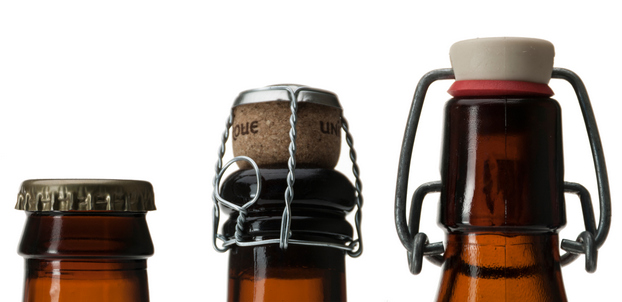
The words “finish” and “closure” are industry terminology from the early days of glass production. The finish refers to the opening of a bottle. It is essentially the part of the bottle that meets your consumer’s lips.
The term originated from the days of hand blown glass manufacturing. It was the last part of the bottle made, so glass blowers called it finished. Ironically, in modern glass manufacturing, the finish is not the last part of the bottle made but the first. Perhaps we should rename it the “start.”
The closure refers to the cap or lid of a bottle. Closures ensure product freshness and integrity. They also can enhance the persona of your brand character. While there are a few closure options for customizable bottles, most craft beer producers will use one of two different types of closure.
Pry-off closures
The 26-millimeter pry is perhaps the most popular and preferred closure in the craft beer industry. The 26-millimeter pry reduces oxygen egress, requires a bottle opener and is familiar among consumers.
Similar to the 26-millimeter pry, the 26-millimeter pry/twist, or simply the 26-millimeter twist closure, is made specifically to be opened without the use of a bottle opener. It is vital to specify which bottle closure you need. While these closure types are very similar, they are not interchangeable.
Cork and cage closures
While the 26-millimeter pry or twist closures are familiar for everyday enjoyment, the cork and cage closure often conveys that the bottle features a more limited or unique product offering. It speaks to exclusivity and premium style. Cork and cage closures are often used on share bottle sizes: 22 ounce or 750 millimeter. Although some bottle finishes are cork and cage only, other bottle finishes are more flexible. The 026-3150 finish can accommodate the 26-millimeter pry or the cork and cage.
Cork and cage closures are fun to open — the anticipation of pulling a cork, the sound of the “pop” and the gurgle of beer coming from the bottle. Cork and cage closures are traditionally used for champagne bottles. They are very celebratory in nature, creating an experience of excitement and joy.
Closures ensure product safety and freshness and have a big impact on how the consumer will access and drink your beer, but the final touch and perhaps the greatest impact on the tenets of your brand is how you decorate and label the bottle.
Labels and decorations
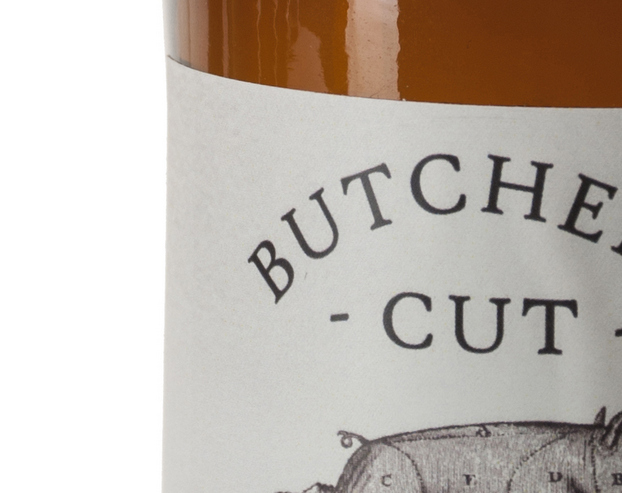
The label of your bottle is the narrator of your brand’s great story. Your label frames your brand/brewery’s name and informs the consumer as to what kind of beer they are drinking. It also meets the legal obligation for government information, including alcohol warning and capacity.
The bottle comes to the aid in this labeling process. It provides a specific location for label placement. The bottle also protects the label during the application process, handling, shipping and consumption of the product. There are two main label placement areas on a bottle: the main body and the neck.
Main body
The main body label panel refers to the cylindrical shape at the thicker bottom part of the bottle. This area is outlined by two contact points at the shoulder and heel of the bottle. These key impact surfaces provide stability in conveying, filling and labeling the bottle. They also provide protection for the labels in fast-moving and abrasive filling environments.
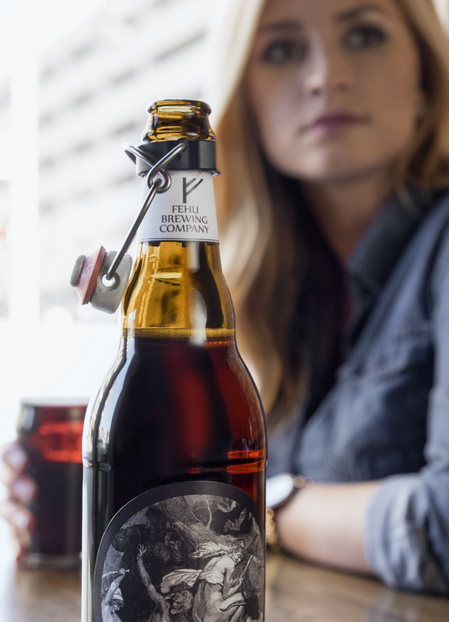
Neck
The second label placement area is on the neck. Not all bottles are created equal. Some long neck bottles have plenty of straight label space on the neck; other long neck bottles may not be suitable for neck labeling. If there is a slight bulge along the neck, for example, this is called a compound surface and is not suitable for labeling. The champagne bottle has an S-curve neck and therefore the labels do not lay perfectly flat on the surface.
Be sure to verify the technical specification of a bottle to determine the available label space on the neck and the main label panel. For a quick check, hold a business card to the surface of the bottle profile. Keep the card vertical. Anywhere you see light between the card and the bottle is not a suitable area for labeling.
Label types
Traditional paper labels are the most commonly used. They are easy to apply and available at economical pricing. Paper labels offer plenty of space for branding and additional information. These labels do fully cover the space they are placed on, not allowing the consumer to see the brew through the label. Label shapes can vary, providing additional opportunity to uniquely brand the bottle.
For additional flexibility, look at pressure-sensitive label (PSL) printing. PSL printing requires less setup time and less initial expense than traditional paper printing, allowing you to start at a much lower minimum order quantity. It also offers a variety of options in size and shape as well laminates and varnishes. PSL printing allows you to use clear film to create see-through labels or unique shapes that seem to float on the bottle. PSLs also hold up well in wet environments like an ice bucket.
Applied ceramic label (ACL) is the most premium option. Each color is applied to the bottle individually through a robust screen printing process. There does not need to be a background color if it is not a desired part of the design, as every element is essentially a cut out. Due to the printing technique, it is the sturdiest option on the market and also the most expensive.
Last step: customization
Beer bottles are sold in one of three categories: stock, semi-custom or custom. Each category has advantages, and they are often strategically used together as a packaging solution that evolves with needs of the brewery.
Stock
Stock bottles are the most convenient to specify and use. These fast-from-stock options can often be ordered in volume sizes of a pallet at a time. Stock bottles can be ordered directly from various manufacturers or distributors, who break volumes down to even smaller sizes. Some suppliers offer the added convenience of ordering online with a credit card. Stock bottles are available in a wide variety of styles and capacity sizes. However, your ability to differentiate the bottle through glass characteristics themselves will be limited with stock bottles.
Semi-Custom
Semi-custom bottles were developed specifically to overcome this limitation. This category begins as a stock option and then adds brand iconography to the bottle profile with in-molded glass decoration. Typically applied on the bottle’s shoulder, virtually any signature element can be embossed on the bottle; type, logos or texture or slogans are added by leveraging the advantages of glass packaging mold production.
Many breweries who begin with a stock bottle can easily move over to a semi-custom bottle because the critical bottle dimensions remain the same. Semi-custom bottles are a fast, relatively inexpensive way for brands to create unique elements in their bottle profile. For those brands who want more, there are full custom bottle design options.
Custom
Some of the most exciting bottles on the retail shelf are those that break with the conventions of a stock or semi-custom bottle profile. Full custom bottles have the advantage of creating an optimized bottle shape that is immediately recognizable. These custom shapes can further be made identifiable with in-molded brand names, iconography and textures.
Many brewers choose to work with a design agency or directly with the glass manufacturers design team to create a bottle that is entirely custom to their brand. These one-of-a-kind bottles can come in a variety of shapes, sizes, colors and capacities and open the door to endless options for decoration, embossment and label panels. The tradeoffs to custom bottles are private mold costs, longer speed to market and bottle production scheduling and availability. Yet, custom bottles provide the greatest opportunity to create an iconic package with high brand equity.
Picking the correct bottle for your beer requires careful consideration of several packaging design elements. You must successfully choose how you will bring together various packaging components from size and shape to color and decoration to create a successful and compelling brand presence. You need the right product and packaging with the right positioning and the right market timing to be successful, and glass packaging offers a number of advantages to help you achieve success.
Raul M. Paredes is director of new product development, O-I.


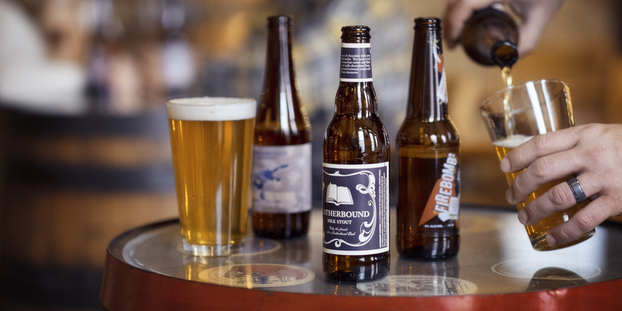

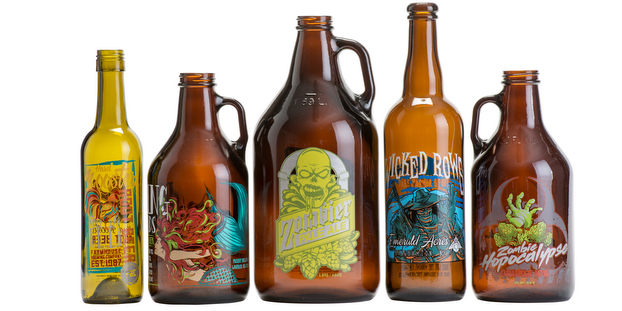
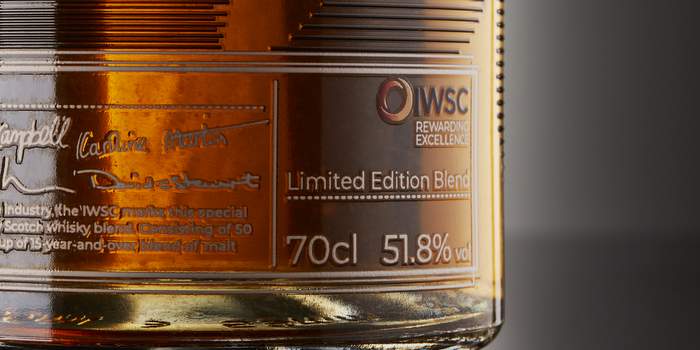
Leave a Reply
You must be logged in to post a comment.